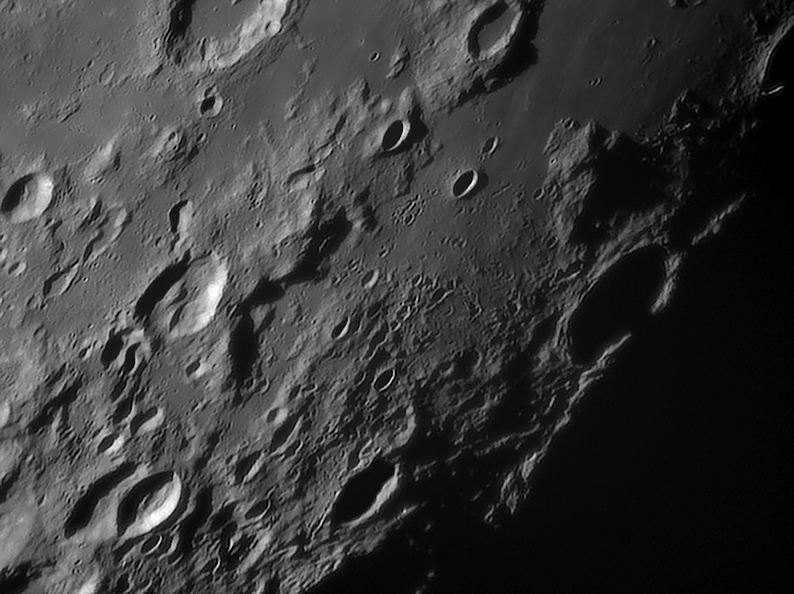November 21, 2013
Uninspiring, but an Active History

image by Bob Pilz, Asheville, NC
This isn’t an inspiring piece of lunar landscape. Its the marshy southern shore where Mare Fecunditatis runs onto highland terrain that apparently lacks strong structural control. Its exactly the sort of place that people don’t image often enough, and it must have stories hidden away to tell us. First, what is that huge triangular mountain just above Wrottesley, enshadowed at center right? In the 1830s Mädler named it Biot Beta, after the 13 km wide simple crater to its left. There are essentially no processes for making big mountains on the Moon except as rims of craters and basins. Sure enough, in Paul Spudis’ book The Geology of Multi-Ring Impact Basins he uses Beta to help define the outer, 1,320 km diameter ring of the Nectaris Basin. And notice the hilly ridge that goes from Borda (center left) to Biot B (flat-floored crater at top center) - that is the inauspicious continuation of the main Altai Scarp ring of Nectaris. Now a detail. Notice the straight and narrow crater chain on the left side of Snellius A (shadow-filled, bottom center). That is a secondary crater chain, but from where? Nearby Snellius seems too old (and in the wrong direction), but younger Stevinus is right in line. One final oddity - did you notice that the eastern bright rim crest of Wrottesley has a shadow right in its middle? Why do you think that is? What is just to the east? Its Petavius; Wrottesley formed on the rim of the larger crater, and that may have lowered the height of Wrottesley’s eastern rim, accounting for the shadow.
Chuck Wood
Note: This was LPOD six years ago today: Nov 21, 2007. What has changed since then? Bob's picture would still be considered excellent, and the comments in the text are still relevant. But LRO QuickMap allows us to test the suggestion that the east rim of Wrottesley is lower than the rest of the rim. Post in the Comment section what you find out.
Technical Details
2007/08/01, Utime: ~09:17. 200mm f/6 Newtonian reflector, Televue 3x Barlow, DMK 21BF04 B/W camera, Blue IR-block filter, 30 fps, 1/44 sec, 600/9000 frames stacked with Registax V4; PS CS, Focus Magic. Taken from Lat: 35 degrees 36 minutes N, Long: 82 degrees 33 minutes W, Elev: ~850m.
Related Links
21st Century Atlas chart 4.
Yesterday's LPOD: The Moon Will Be Crowded in 2020
Tomorrow's LPOD: Still Sad
COMMENTS?
Register, Log in, and join in the comments.



